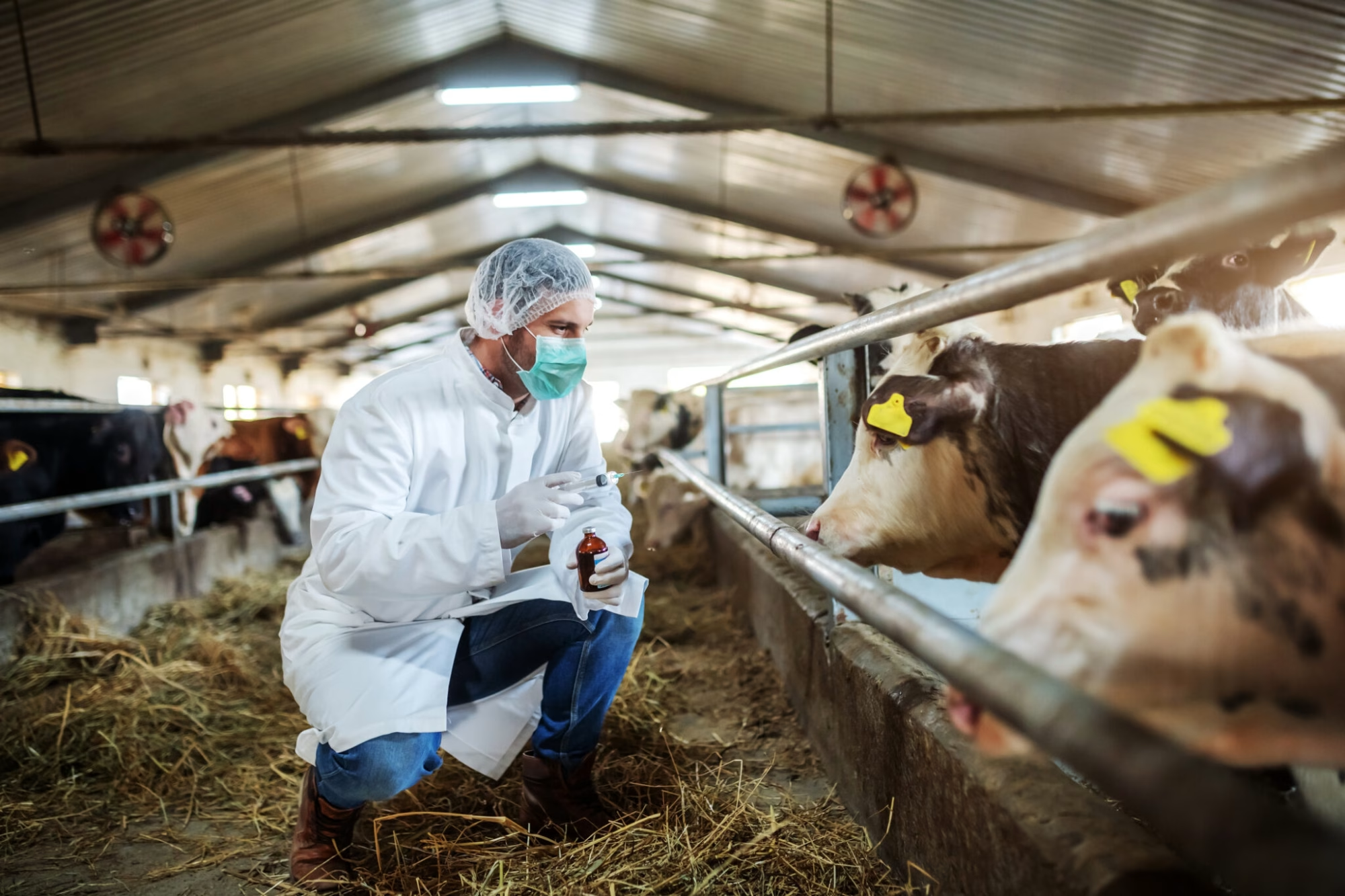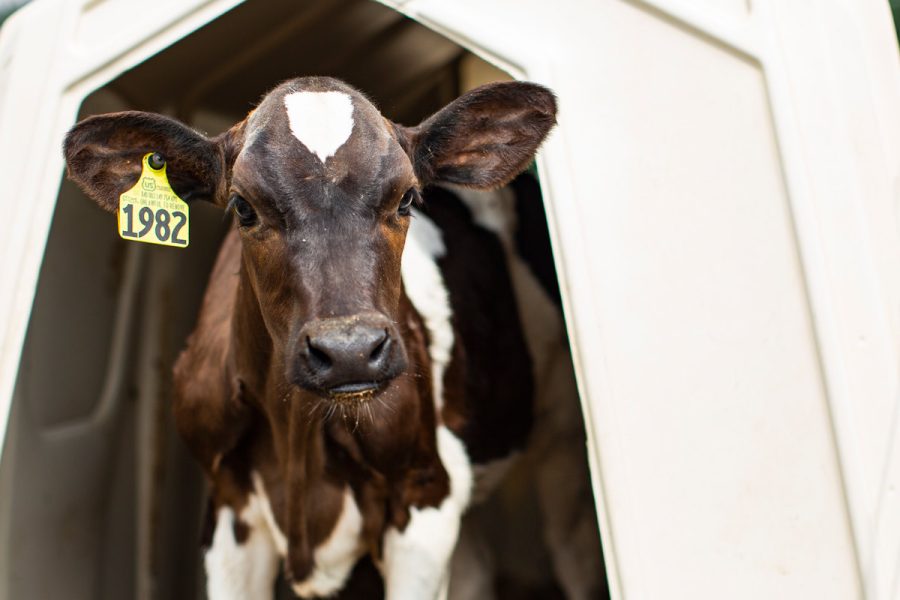Prepare your heifers for winter by learning simple tips on housing, nutrition, and water. Is your herd ready for the cold?
Summary:
As winter’s chill blankets farmlands, the often-overlooked cold stress on young dairy heifers becomes a central concern for dairy farmers. These seasoned guardians must reassess management practices to protect their post-weaned and calving-age heifers from the harsh realities of colder months. A multifaceted approach is essential, incorporating adequate housing, meticulous bedding, robust nutritional plans, and unwavering access to water. Suitable measures, such as dry, adequately bedded pens, proper ventilation systems, energy-rich and nutritionally balanced diets, and solutions for unfrozen water supply, are key in safeguarding heifers from cold stress. These strategies shield them from harm and propel them toward realizing their genetic potential as future productive herd members, ensuring they survive and thrive through the winter.
Key Takeaways:
- Monitor weather conditions closely, focusing on maintaining heifer body temperature to prevent energy diversion away from growth and development.
- Ensure consistent clean, dry, and absorbent bedding to keep heifers warm and dry during colder months.
- Implement effective housing strategies that balance adequate air exchange with protection against drafts to prevent respiratory diseases.
- Collaborate with nutritionists to adjust heifer diets, ensuring they meet the energy needs required for growth during winter.
- Regularly check water availability, preventing freezing in troughs to maintain hydration and support feed intake.
- Use natural or manmade windbreaks to reduce wind chill for heifers housed outdoors.

As winter draws near, dairy farmers often focus on battling heat stress. However, cold stress is a serious and often overlooked issue for dairy heifers, especially those between post-weaning and calving. Unlike older cows, younger heifers are more vulnerable. Cold can harm their growth and health. This article highlights why we need to rethink seasonal challenges in dairy farming. We urge professionals to recognize the hidden threat of cold stress. By raising awareness and taking proactive steps, farmers can help their heifers survive and thrive in winter, leading to a healthier and more profitable herd year-round.
Cold Stress: The Silent Saboteur of Young Heifers’ Growth and Development
Cold stress is a hidden threat in dairy farming that uniquely affects young heifers, especially in cold weather. Unlike adult cows, young heifers struggle to maintain their body temperature when the weather turns freezing. This struggle begins when their natural body heat isn’t enough, forcing their bodies to work much harder to stay warm.
The impact of cold stress on young heifers is profound. These animals should be using their energy to grow, but instead, they’re using it to fight off the cold. It’s like removing essential materials from a building site – growth slows down, and development can halt, putting their future productivity at risk.
In this situation, every bit of energy is essential. The energy that should be turned into muscle, bone, and blood—vital for growth—keeps the animals warm. Heifers might not grow as they should and could mature later than expected.
Dairy farmers play a pivotal role in managing this challenge. They are responsible for ensuring the survival and optimal growth of these young animals, as they represent the future of the herd.
Guardians of Warmth: Heifer Housing and Bedding as the First Line of Defense
Taking good care of heifer housing and bedding is key to reducing cold stress, which can slow growth and harm health. A heifer’s ability to handle cold weather relies heavily on her environment; therefore, dry, well-bedded pens aren’t just for comfort—they’re essential. These pens should be kept clean and dry and have enough bedding to provide warmth.
Simple tests, like the knee test, are practical ways to check bedding quality. Farmers can tell if the bedding is dry enough by kneeling in different parts of the pen for 10-15 seconds. If the knees stay dry and clean, the bedding is good; if not, it’s a clear sign that fresh bedding is needed.
Preventing respiratory issues is crucial, in addition to keeping bedding dry. Heifer spaces need enough air circulation to prevent respiratory problems. Air must move around to prevent harmful germs without causing drafts. Installing systems like tube ventilation can boost airflow while avoiding drafts, ensuring heifers stay warm and healthy. These housing and bedding practices aren’t just tips; they’re essential for helping heifers withstand the cold.
Winter’s Chill and the Metabolic Call: Elevating Heifer Nutrition to Sustain Growth
As winter sets in, addressing the nutritional needs of heifers becomes crucial in the fight against cold stress. The cold weather demands that heifers have a diet rich in energy to keep them warm and support their growth.
A good nutrition plan meets the increased energy needs and supports the heifers’ growth. Working with an experienced nutritionist is valuable here. They can help create balanced feed rations with energy, protein, fat, and other nutrients. This partnership helps each heifer meet its growth goals, preventing problems with poor nutrition.
Poor nutritional management can lead to serious issues like stunted growth, delayed puberty, and later calving ages. These delays can affect the overall herd management strategy, impacting productivity and profitability. Therefore, careful attention to nutrition during the colder months protects against these problems and ensures a healthy, productive herd.
The Icy Threat to Hydration: Safeguarding Heifers’ Access to Vital Water Resources
Water is crucial for heifers, especially when it can freeze in cold weather. It’s not just important—it’s necessary to keep them healthy and ensure they eat enough. If water is frozen or hard to get, it affects their ability to get the energy they need and grow properly.
Heifers cannot effectively process food without enough water, and their growth can suffer. They may not gain enough weight or grow to the right size for timely breeding, making having unfrozen water available all the more critical.
Farmers can use heated water troughs or insulated containers to prevent water from freezing. Regular checks are also essential to ensure water is always available. Heating buckets or putting water in places protected from the wind for outdoor heifers can help. This way, farmers can ensure their heifers stay healthy and grow, even in the coldest winter weather.
Innovative Solutions for Unyielding Cold
- Creative Windbreaks: Consider using natural elements such as strategically planted trees or shrubs to create effective windbreaks. Alternatively, portable windbreak panels made from recycled materials can offer flexible solutions for heifer pens, particularly in open areas.
- Technological Monitoring: Implement wearable technology such as smart collars or tags with temperature sensors to monitor heifers’ body temperatures in real time. This data can alert farmers to early signs of cold stress, allowing for prompt intervention.
- Enhanced Bedding Solutions: Explore using thermal bedding mats, which provide additional warmth and comfort. Some farms have successfully adopted these, finding that they reduce the need for excessive layers of traditional bedding materials.
- Advanced Housing Designs: Consider geodesic dome structures for housing, which offer superior insulation and airflow management compared to conventional barns. This innovation, used successfully in certain regions, provides a balanced microenvironment for heifers.
- Successful Practices: A dairy farm in Wisconsin reported improved heifer health and growth rates by incorporating infrared thermal cameras. These allow quick group scanning to identify heifers with abnormal heat signatures indicating cold stress or illness.
- Smart Nutrition Management: Utilize software that customizes feed rations based on weather conditions to ensure heifers receive the optimal energy needed to combat cold stress. Such solutions have led to better feed efficiency and growth consistency.
- Community Collaborations: Engage with local agricultural extension services or nearby farms for cooperative solutions, such as pooling resources to create shared indoor facilities or rotating pasture use with better natural shelters.
The Bottom Line
Dealing with cold stress means dairy farmers must take action to protect their heifers’ health and growth. This article has covered key areas like housing, bedding, nutrition, and water, which are crucial in defending heifers from the cold. Managing these things well isn’t just a good idea—it’s necessary. By using the strategies discussed, farmers can protect their young heifers from cold stress so they grow and reach their full potential.
It’s time to examine and improve your heifer management techniques. Consider how these strategies can complement what you’re already doing to keep your herd healthy and productive. We should also share ideas and experiences. Dairy farmers and industry experts are invited to discuss how they deal with cold stress. By sharing knowledge, we can keep improving and ensure our heifers survive the winter and thrive. Join the conversation, share your experiences, and let’s work towards continuous improvement together.
Learn more:
- Essential Tips for Keeping Your Dairy Calves Cool and Healthy
- Transforming Young Heifers to Mature Cows: Boosting Dairy Herd Longevity
- Cool and Calm: Essential Tips for Handling Dairy Cattle in Hot Weather
 Join the Revolution!
Join the Revolution!
Bullvine Daily is your essential e-zine for staying ahead in the dairy industry. With over 30,000 subscribers, we bring you the week’s top news, helping you manage tasks efficiently. Stay informed about milk production, tech adoption, and more, so you can concentrate on your dairy operations.







 Join the Revolution!
Join the Revolution!





